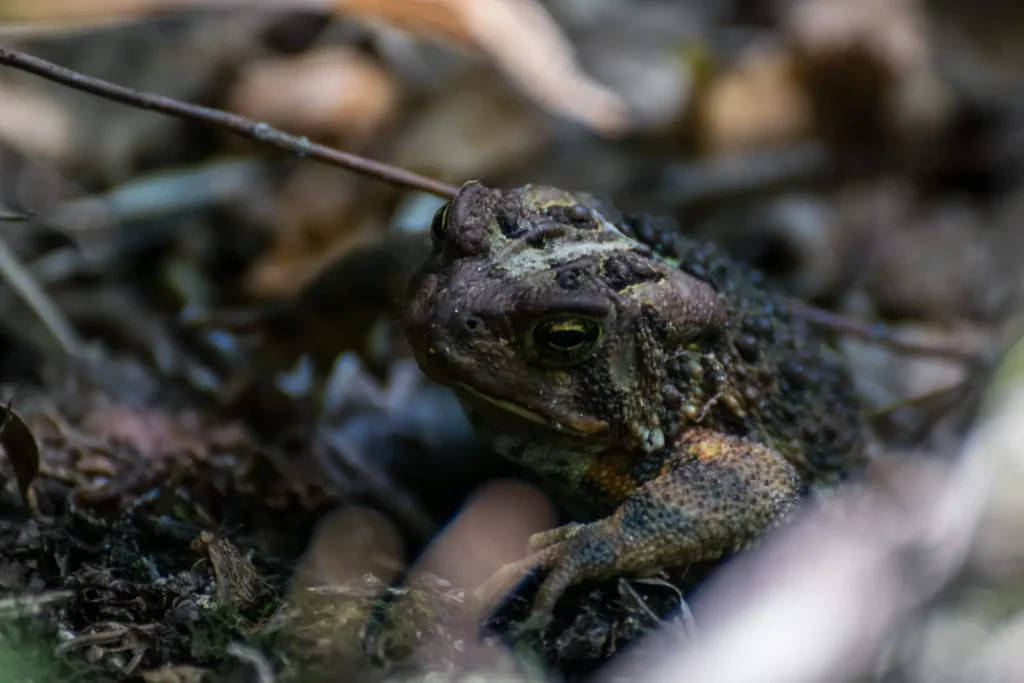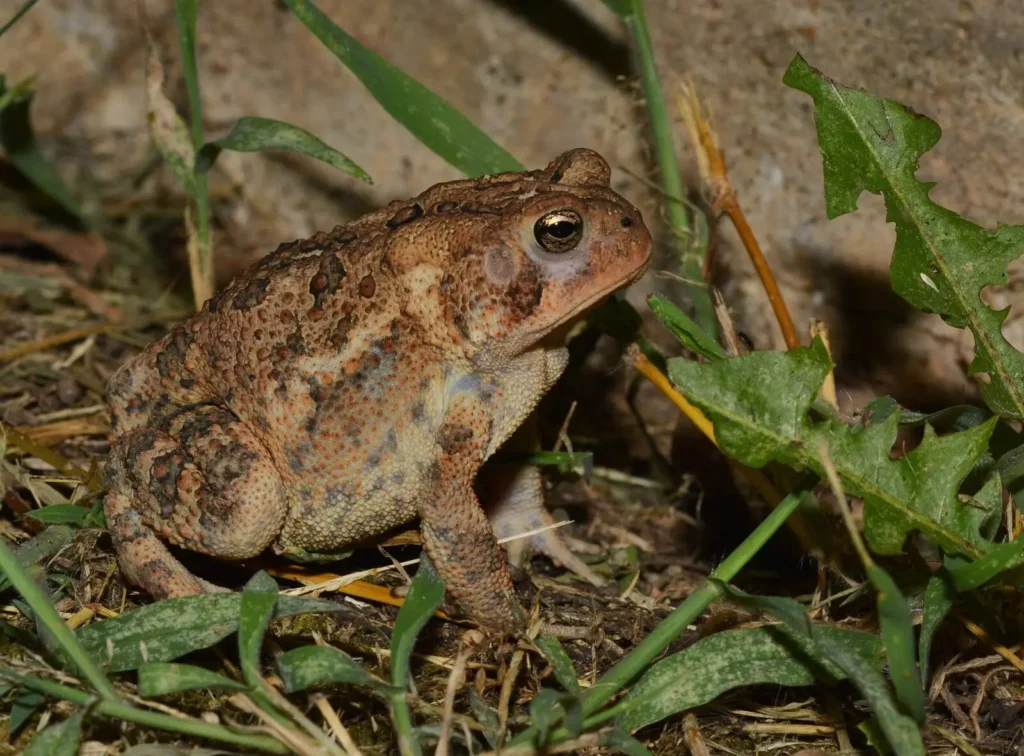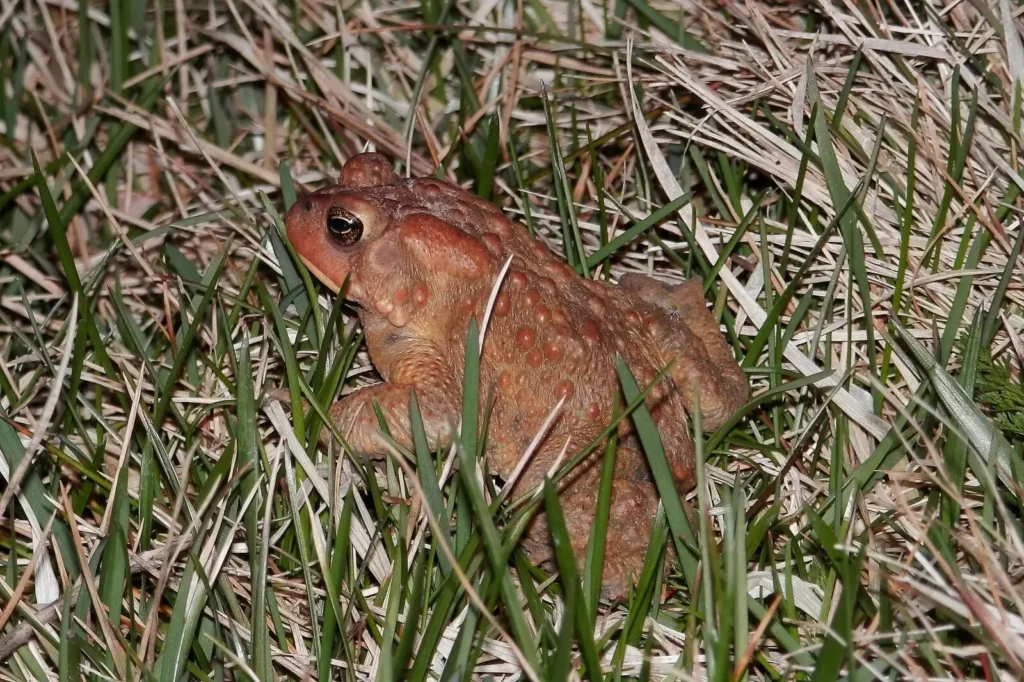American Ropukha vulgaris (Anaxyrus americanus, earlier Bufo americanusIt is one of the most common amphibian species in North America. This hardy animal has perfectly adapted to life in a variety of environments, from dense forests to urban parks and gardens.
Not only does it play an important ecological role by controlling insect populations, but it also has unique defense mechanisms against predators. She is known for her poisonous skin and ability to adapt to adverse conditions.
📌 What makes American ropuha unique?
✔ It can live in a wide variety of environments, including cities
✔ Secretes a poisonous secret to protect against predators
✔ Able to change skin color depending on the environment
✔ Helps to control the number of insect pests
Let's take a closer look at this amazing amphibian!

Scientific classification
✔ The Kingdom: Animals (Animalia)
✔ Type: Chordal (Chordata)
✔ Class: Amphibians (Amphibia)
✔ Row: Tailless ones (Anura)
✔ Family: Ropukhovye (Bufonidae)
✔ Gender: Anaxyrus (once referred to the genus Bufo)
✔ View: Anaxyrus americanus
📌 This species has several subspecies, including the Eastern, Western, and dwarf American moth.
Appearance and characteristics
🐸 What are the features of the American ropuhi?
✔ Sizes: 5-10 cm (males are smaller than females)
✔ Weight: up to 85 g
✔ Colour: yellowish to dark brown
✔ Skin: dry, warty, covered with venomous glands
✔ Oko: golden-copper, pupils horizontal
✔ Paws: short, more adapted for crawling than jumping
📌 Ropuha can change the color of the skin, adapting to temperature, humidity and the environment.
Distribution area and habitat
🌎 Where does the American ropuha live?
✔ It is distributed in Canada, the United States, and parts of Mexico.
✔ It is found in forests, meadows, swamps, agricultural areas, and even in cities.
✔ It can survive in cold conditions by going into hibernation
✔ Chooses places near water, but spends most of his life on land
📌 Due to its hardiness, the American ropuha is found even in megacities, in urban parks and gardens.

Protection from predators: venom and mimicry
⚠ Is the American ropuha dangerous?
✔ Her skin contains bufotoxins - toxic substances that cause irritation in predators
✔ In case of danger, it releases a milky-white poison through the glands behind the ears
✔ Able to pretend to be dead when attacked
✔ Its venom can cause dogs and cats to vomit if they try to eat it.
📌 Although ropuha toxins are not fatal to humans, you should wash your hands thoroughly after contact with it!
Lifestyle and behavior
🌙 Activity
✔ Leads a predominantly nocturnal lifestyle
During the day, it hides in the grass, under rocks, in rodent burrows
✔ Goes hunting at night
🦶 Moving around
✔ Does not jump, but walks or crawls quickly
✔ Excellent digger-can dig holes to hide or overwinter
📌 During times of stress, the ropuha inflates to look bigger and scare off predators.
Food
🍽 What does the American ropuha eat?
✔ Insects (beetles, grasshoppers, flies, mosquitoes)
✔ Pavuk
✔ Slugs and snails
✔ Small frogs and tadpoles
📌 It helps to control the number of insect pests, making it beneficial for agriculture.
Reproduction
💖 How does ropukha reproduce?
✔ Mating season starts in spring
✔ Males summon females with a distinctive chant
✔ The female lays 4,000-8,000 eggs in a pond
✔ Tadpoles hatch in 6-12 days
✔ Metamorphosis is completed in 1-2 months
📌 Young ropuhi leave the reservoir and move on to life on land.
Natural enemies and threats
⚠ Who hunts the American ropuha?
✔ Grass snakes and water snakes
✔ Birds of prey (owls, hawks)
✔ Raccoons and skunks
🚨 Main threats from humans
✔ Water and soil pollution
✔ Loss of natural habitat
✔ Road deaths during migration
📌 Reducing the population of ropukh threatens the ecological balance, as they control the number of insects.

Ropukha and the man
🏡 Can I keep an American ropukha as a pet?
✔ It is hardy and does not require complex care
✔ Lives up to 10-15 years in captivity
✔ Does not require a large aquarium, but requires a moist substrate
✔ Does not like frequent contact with people
📌 Ropuha can become a natural protector of the garden by eating harmful insects!
Interesting facts
💡 American ropuha can survive without food for several months!
💡 Its toxins have historically been used in medicine and witchcraft!
💡 It can tolerate temperatures as low as -10°C while hibernating!
💡 Ropuha always returns to the same pond to breed!
Conclusion
The American fly is an important component of the ecosystem that helps control the number of insects.
It adapts well to various conditions, lives both in the wild and near people.
🌿 Preserving its natural environment is an important step to maintain balance in nature!
